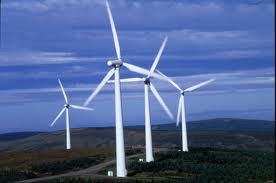Global electricity review 2024
Renewables generated a record 30 percent of global electricity in 2023, driven by growth in solar and wind especially from China, according to the Global Electricity Review 2024 released by the global
Renewables generated a record 30 percent of global electricity in 2023, driven by growth in solar and wind especially from China, according to the Global Electricity Review 2024 released by the global

<p>This 2010 edition of Key World Energy Statistics by IEA consists of global data up to 2008 and when available up to 2009, for energy production, trade, transformation and consumption, CO2 emissions from fuel combustion and energy prices.</p>
Anyone following the statements expressed from time to time about the renaissance of nuclear energy could get the impression that the number of new nuclear plants was increasing at an immense and steady rate. In fact, more recent statistics show 60 plants in the process of being built, the majority in China and others in Russia, India, South Korea and Japan.
<p>A new myth of the nuclear lobby is the claim that nuclear power and renewable energies are complementary forms of energy. The authors Antony Froggat and Mycle Schneider prove the opposite: those who build nuclear power plants hinder the expansion of renewable energies.</p>
The severe challenge posed by the need to reduce emissions of greenhouse gases, especially in the electricity generation sector, has led to renewed interest in the construction of nuclear power plants. These would initially replace the aging stock of existing reactors, then meet electricity demand growth, and eventually replace some of the fossil-fired electricity-generating plants.
Large-scale production of crop based (first generation) biofuels may not be feasible without adversely affecting global food supply or encroaching on other important land uses.
Recent increases in production of crop-based (or first-generation) biofuels have engendered increasing concerns over potential conflicts with food supplies and land protection, as well as disputes over greenhouse gas reductions. This has heightened a sense of urgency around the development of biofuels produced from non-food biomass (second-generation biofuels).
Algal biofuels have many advantageous characteristics that would lower impacts on environmental degradation in comparison to biofuel feedstock and in some cases improve the well-being of developing and developed communities.
The IEA estimates that, if implemented globally without delay, the 25 IEA Energy Efficiency recommendations could save 8.2 Gt CO2 per year by 2030. Yet many governments struggle with their implementation and thus miss a great part of the energy efficiency potential.

<p><span style="font-size: 10pt;">This new report released by GWEC finds that wind power could play a key role in satisfying the world's increasing power demand, while at the same time achieving major greenhouse gas emissions reductions. By providing detailed wind power trajectories for all the world’s regions, it shows how global wind power capacity could reach 2,300 GW by 2030, providing up to 22% of the world's electricity needs</span>. </p>
This study implements a new methodology developed by the JRC IES and IE for estimating changes in greenhouse gas (GHG) emissions from soil and above- and below-ground biomass resulting from global land use changes caused by the production of biofuels. The methodology is based on the Tier 1 approach as developed under the IPCC 2006 Guidelines for National Greenhouse Gas Inventories.